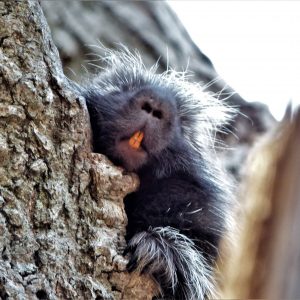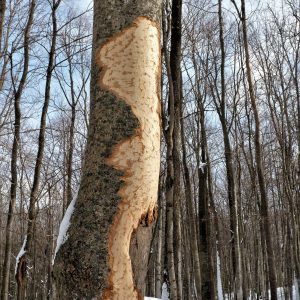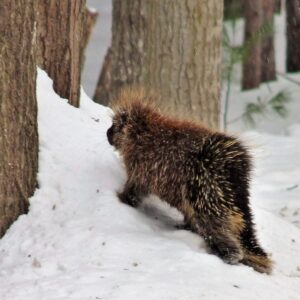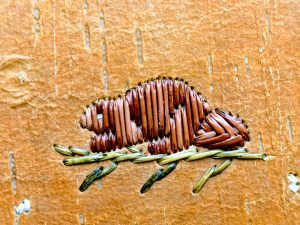

For thousands of years, Native Americans of the Great Lakes region spent the cold, dark months of winter engaged in hunting and trapping, ice fishing, mending snowshoes, and making things around the hearth fire. Before glass trade beads became available, women perfected the art of decorating clothing, baskets, bags, and other items with dyed porcupine quills. Quillwork takes patience, skill and practice, and has been taught by parents to their children for many generations.
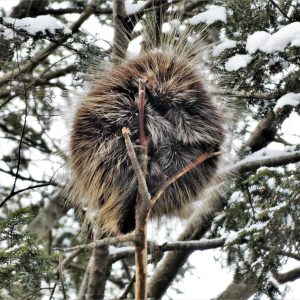

Winter is also a traditional season for storytelling. In the Ojibwe culture, certain stories are only meant to be shared when there is snow on the ground. One of these tells the tale of how a clever porcupine, originally covered by just a coat of thick fur, outsmarted a hungry black bear. After placing hawthorn branches with sharp thorns on his back, porcupine rolled into a ball just as bear sprang upon him, offering a spiky surprise. When Nanabozho learned of this clever trick, he took some branches from a hawthorn tree and peeled off the bark until their spines were white. After putting clay all over porcupine’s back, Nanabozho stuck in the thorns, one by one, until it was completely covered. He then made this a permanent part of porcupine’s skin so he and his descendants would always be protected from their enemies.
Most visitors to Mackinac State Historic Parks learn a great deal about beavers. Beaver pelts fueled the fur trade for centuries, providing jobs for Native Americans, voyageurs, merchants, soldiers and civilians. Guests at Dousman’s Mill can even hike the trails to search for fresh signs of beaver activity and look for their dam built across Mill Creek. Only humans alter the landscape more dramatically than this industrious mammal, the largest rodent of North America.
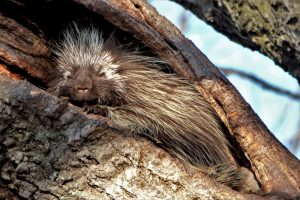

Few people realize that Dousman’s Mill is also home to the second largest rodent on the continent, the North American Porcupine. Growing up to 30 pounds and more than two feet long, a porcupine can live up to 10 years. Porcupines are slow, secretive, and solitary, usually seen sleeping at the top of a tree or walking warily across a road.
A porcupine is truly amazing in many ways, particularly due to its needle-sharp, barbed quills, which are actually modified hairs. A fully-grown porcupine has more than 30,000 quills, which are loosely attached to muscles just beneath the skin. Despite a popular myth, porcupines cannot throw or shoot their quills. When threatened, they turn their back to an attacker and quickly flick their tail, driving quills into the toughest flesh. As quill tips are barbed like a fishhook, they are very painful and difficult to remove.
Porcupines can be found many places in the woods of Michigan. As you hike, watch for signs such as chewed tree trunks or branches, as inner bark is especially sought after in the winter months as a source of food. Porcupines even chew on buildings and trail signs looking for salt, glue or paint, and will even seek out sweat residue left on wooden tool handles. Because they are rodents, a porcupine’s teeth continually grow, just like a mouse or beaver’s do. With binoculars or a camera, look closely to see if you can spot the orange coating on their teeth, which is an iron-rich coating of enamel.
Visitors to Dousman’s Mill can learn about porcupines and other animals of the north woods during naturalist programs throughout the season, which begins on May 7. To get a treetop view climb the steps of the Treetop Discovery Tower. Who knows, you might even see eye-to-eye with a porcupine!






